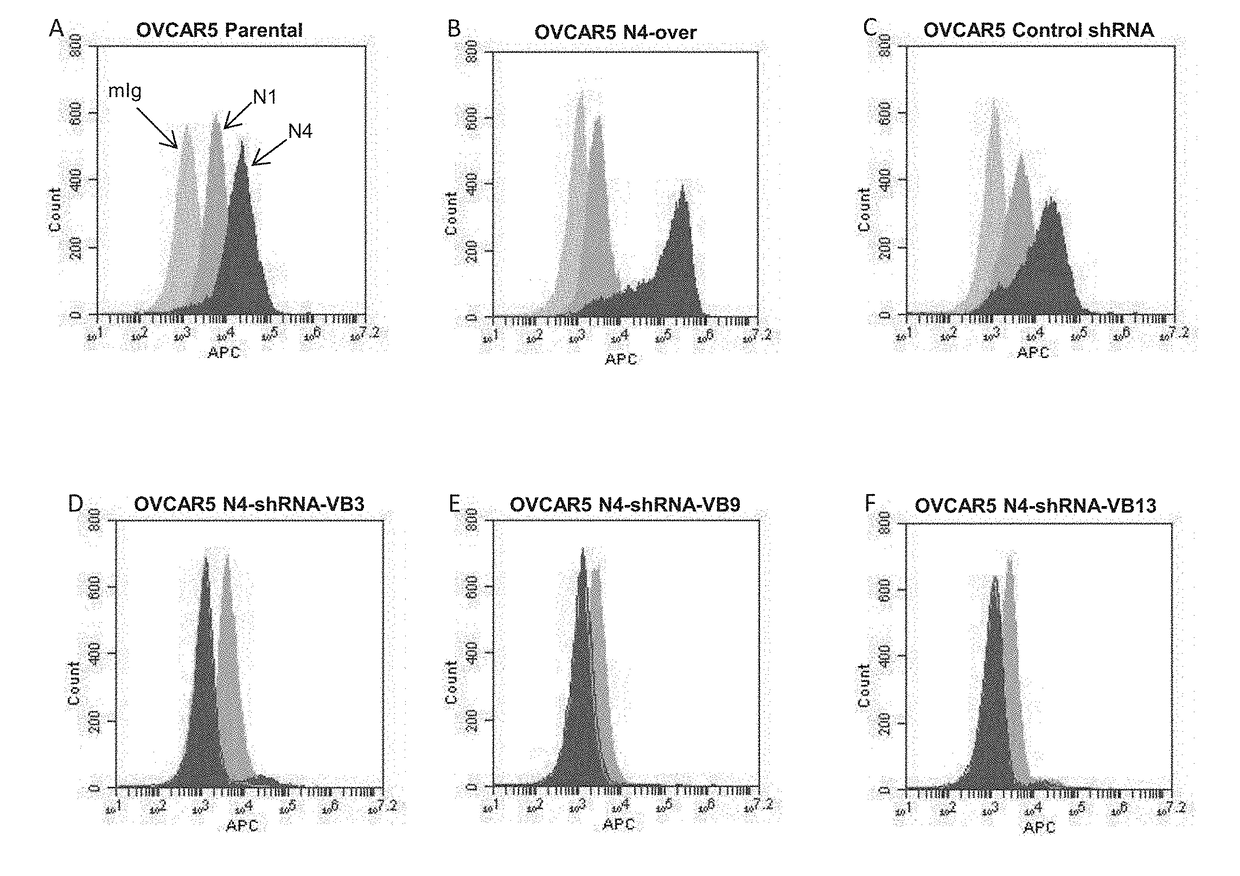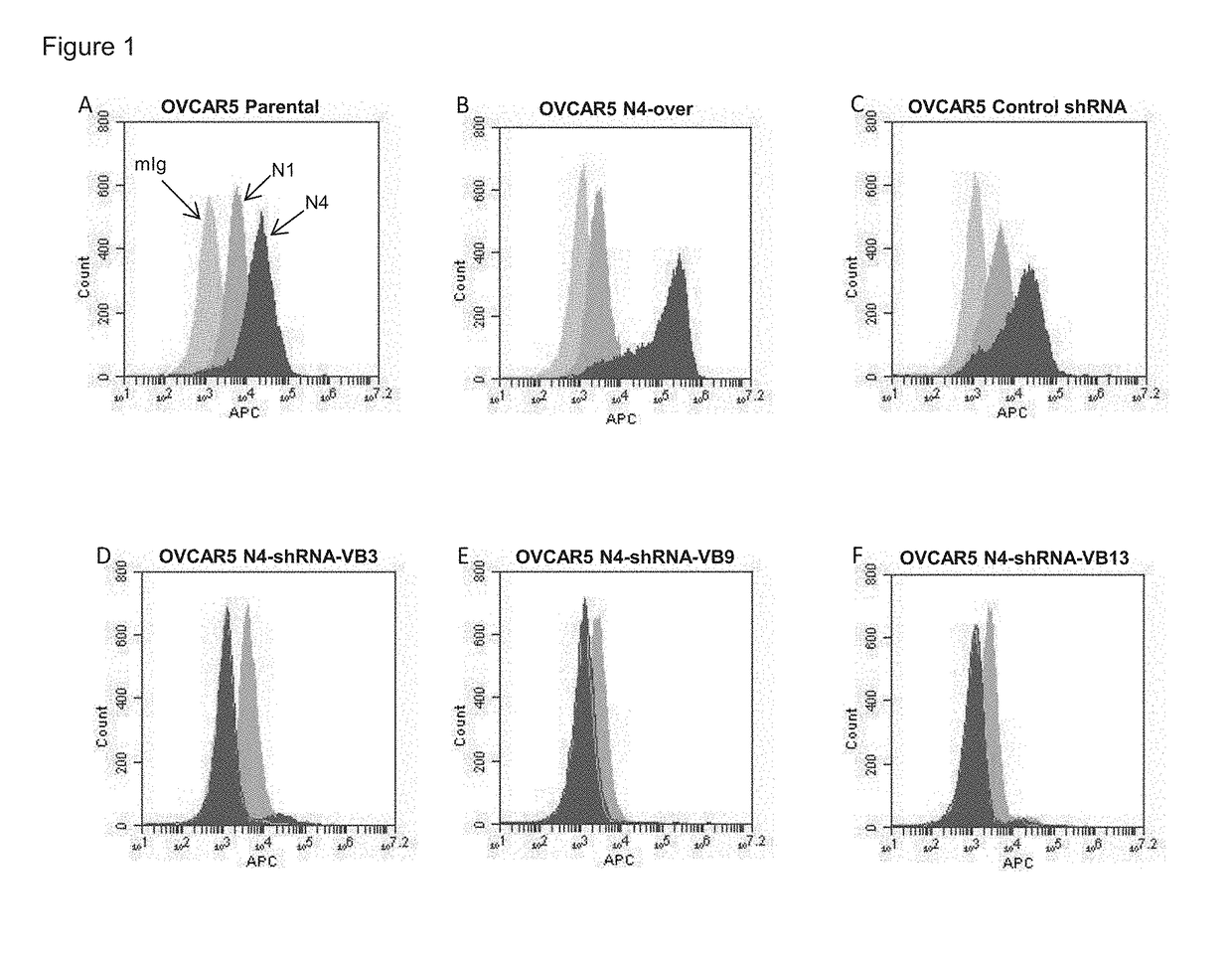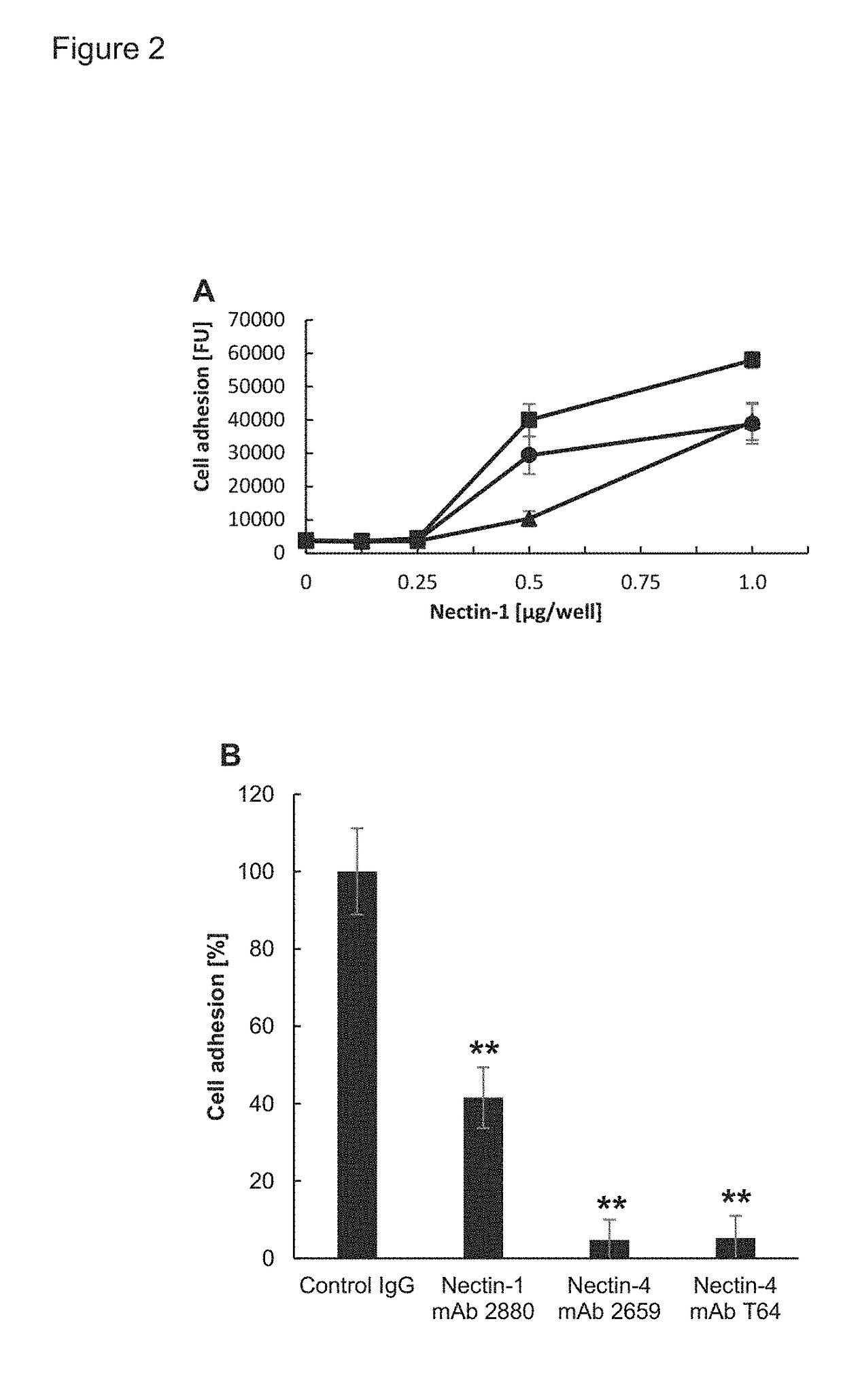Inhibitors of cell adhesion
a cell adhesion and cell technology, applied in the field of inhibitors of cell adhesion, to achieve the effect of limiting or blocking cancer metastasis (adhesions/spheroids)
- Summary
- Abstract
- Description
- Claims
- Application Information
AI Technical Summary
Benefits of technology
Problems solved by technology
Method used
Image
Examples
examples
[0120]The following examples are provided in order to demonstrate and further illustrate certain embodiments and aspects of the present invention and are not to be construed as limiting the scope thereof.
example i
Introduction
[0121]The primary mechanism of ovarian cancer progression is by localized tumor shedding and seeding within the peritoneal cavity, although hematogenous metastasis has been observed [3]. Cells are released from the primary tumor, which may arise in the fimbria of the fallopian tube [4], and then seed throughout the peritoneal cavity, attaching to the local organs and invading, ultimately resulting in the death of the patient. Ovarian cancer cells are unique in their ability to recruit fluid into the peritoneal cavity (ascites fluid) and exist in a free-floating form as single cells and multicellular aggregates, termed spheroids. Spheroids are able to resist standard chemotherapy (which relies upon rapidly dividing cells), due to their slow replication and the protection afforded by the tight cell aggregation [5, 6]. Ovarian cancer spheroids are also capable of adhering to extracellular matrix proteins and monolayers of mesothelial cells [7-11] and can disaggregate and in...
example ii
Materials and Methods
[0231]Effect of Peptides on Antibody Binding to Cells as Determined by Flow Cytornetry:
[0232]Briefly, NIH:OVCAR-5 cells that natively express a moderate amount of nectin 4 protein were incubated for 30 minutes in 150 μg / mL of soluble peptide in DMSO. After incubation, the cells were washed, and then triple antibody stained using mouse anti-nectin 4 (or IgG control) primary antibody, biotinylated goat anti-mouse secondary antibody, and streptavidin APC tertiary antibody. Finally, utilizing the University of Minnesota flow core's Accuri C6 flow cytometer, the relative antibody binding affinity for control and peptide-treated samples was quantitated and compared. Data was collected for each of the 57 peptides generated.
[0233]Inhibition of Cell Adhesion with Scrambled Version of Peptides:
[0234]Clear-bottom 96 well plates were coated in recombinant human nectin 1 extracellular domain at various concentrations and treated with bovine serum albumin, synthetic peptides,...
PUM
| Property | Measurement | Unit |
|---|---|---|
| Cell proliferation rate | aaaaa | aaaaa |
| Cell adhesion | aaaaa | aaaaa |
Abstract
Description
Claims
Application Information
 Login to View More
Login to View More - R&D
- Intellectual Property
- Life Sciences
- Materials
- Tech Scout
- Unparalleled Data Quality
- Higher Quality Content
- 60% Fewer Hallucinations
Browse by: Latest US Patents, China's latest patents, Technical Efficacy Thesaurus, Application Domain, Technology Topic, Popular Technical Reports.
© 2025 PatSnap. All rights reserved.Legal|Privacy policy|Modern Slavery Act Transparency Statement|Sitemap|About US| Contact US: help@patsnap.com



